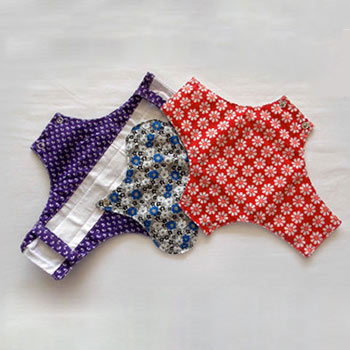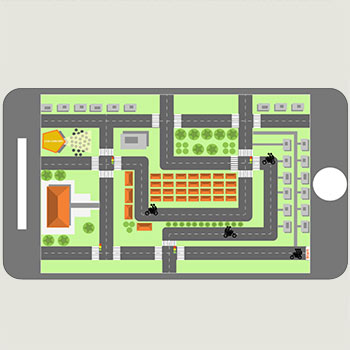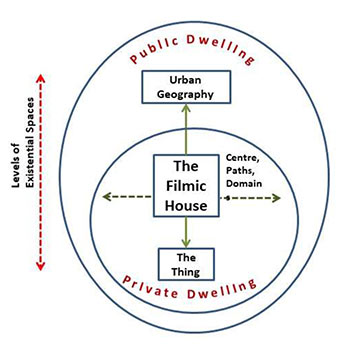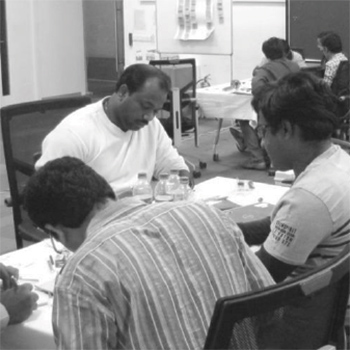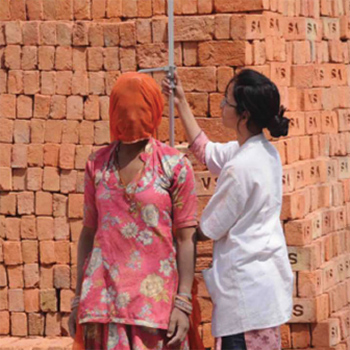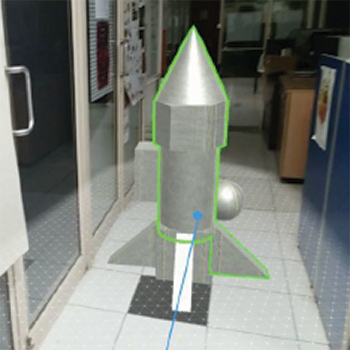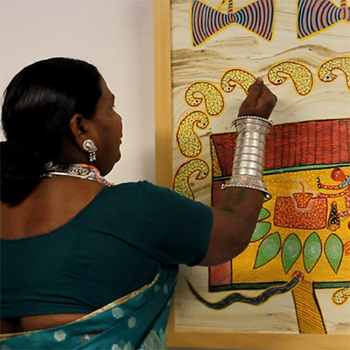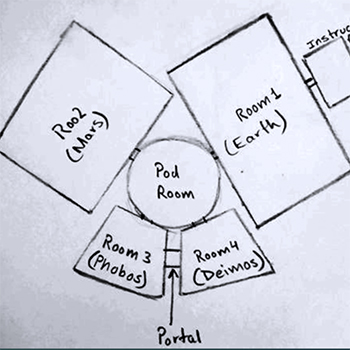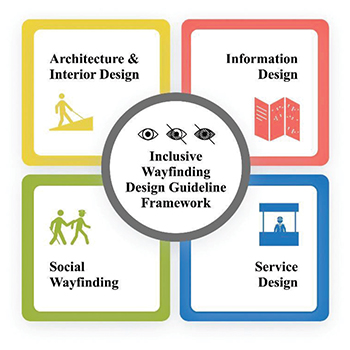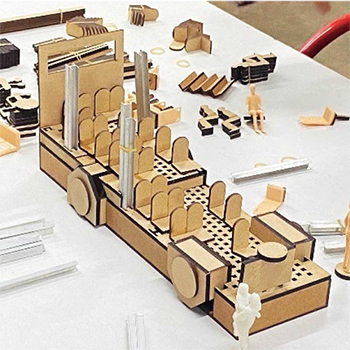PHD Thesis 2019-onwards
2020
(8 items)
by Indrani De Parker; supervisor/s: Prof. Raja Mohanty
by Lakshmi Murthy; supervisor/s: Prof. Anirudha Joshi
(a) Sustainability
(b) Social Change
(c) Participatory Social design
(d) Action research.
We explored the research questions through experiments, cross over trials, studies and personal communication with stakeholders, while considering three products, namely TP, DSNs and Uger. This thesis proposes two tools for sustainable menstruation management for rural communities. The first tool called PASS is an assessment tool that can be used to score and compare systems for sustainable menstruation management. The second tool, Uger pads, is a tool for managing menstrual discharge in a sustainable way. This thesis, by proposing these two tools, lays out multiple possibilities for future sustainable interventions for menstruation management.
by Purba Joshi; supervisor/s: Prof. B. K. Chakravarthy
by Sandeep Athavale; supervisor/s: Prof. Girish Dalvi
by Saurabh Singanapalli; supervisor/s: Prof. Nina Sabnani
by Smita Dalvi; supervisor/s: Prof. Nina Sabnani
by Sharmila Sinha; supervisor/s: Prof. B. K. Chakravarthy
The rapidly changing world scenario and its implications on social needs and behaviours in this new century have stirred the focus of organisations towards the fostering of new ideas. The phenomenon of idea generation has been studied in the field of cognitive psychology in order to better understand the workings of the mind. Substantial innovations often result from transferring solutions from one industry or domain to another by forming correspondence between elements of representation, creating a path for cross-transfer. Analogies possess the potential to juxtapose knowledge from one domain to another, following the principle of making "the strange familiar and the familiar strange" (Gorden, 1961).
In the creative field of design, expert designers often use analogies for strategic problem solving and new idea generation based on prior experiences (Dunber & Blanchettel 2001). Therefore, in the case of novice designers, inculcating this way of thinking can be a way to overcome linear, patterned thinking and expand the boundaries of creative exploration. This stems from the tendency to search for solutions that have previously shown results or search for results within an area of expertise to override the fear of failure. This has led most "design by analogy" studies to focus on data mining (Altshuller 1984) using computational support for big data management and retrieval. While studies reveal that analogy usage is pervasive in many disciplines, there are very few studies that show how and why novice product designers face challenges when using analogy for ideation.
by Amar Kundu; supervisor/s: Prof. Gaur G. Ray
India is the seventh-largest country by geographical area and the second-most populated country in the world. Almost ninety-four percent of the Indian workforce is working in the unorganised sector. Unorganized activities are labor-intensive, necessitating low-level skills and relying on age-old, primitive technologies that pose occupational hazards. Occupational stress can be divided into four major classes, such as physiological stress, postural stress, psychological stress, and environmental stress. The earlier research on the unorganised sector recommends ergonomic design interventions to improve workstation ergonomics. more ergonomic. Mechanization or automation in India, like in other developed countries, is prevalent. An unorganised sector is difficult. Therefore, it needs a context-specific, low-cost design. intervention from the viewpoints of sustainability, cost-effectiveness, and manpower employment, which can reduce occupational stress. It is essential to find out the most significant In the unorganised sector, there is a pain point for doing context-specific design interventions. Hence, the prioritisation of the most painful stress among all other occupational stresses is most important. A physiologically stressful job demands a high physical workload and needs to be redesigned to provide leverage or low-cost mechanization. The pastorally stressful job must be eliminated. change the working posture. The causes of psychologically stressful jobs must be discovered. psychological stress, reorganise the job, and improve the employer-employee relationship. For an environmentally stressful job, the working environment needs to be modified by the worker. acceptable limit. An environmental stressor can be managed at the source or in between the source and the subject (like using PPE).
The Minimum Wage Act, 1948, helps with the fixation and execution of minimum wages to prevent exploitation of labour through the payment of low wages. The minimum wage rate can be fixed at a) a time rate, b) a piece rate, c) a guaranteed time rate, and d) an overtime rate. The Indian Labour Conference (1957) had come up with a norm that should be considered during minimum wage fixation. Minimum wages in India's unorganised sector are set at 2700 calories per day. Ergonomics can validate unorganised workers' energy requirements. The minimum wage fixation committee considers four consumption units per earner. But in the Indian scenario, there are six consumption units per earner (worker, spouse, two kids, and parents). Social scientists must reconsider wage fixation norms in light of this.
2022
(2 items)
by Pratiti Sarkar; supervisor/s: Prof. Jayesh S. Pillai
The Indian schools in Tier 2 and Tier 3 cities have technology-driven classrooms. However, learning subjects such as (but not limited to) mathematics, science, and history that include abstract concepts often becomes challenging for students due to the requirement of visualising skills, a lack of learner-content control, and frequent disengagement. This leads to the requirement of a student-centered technological pedagogical tool. According to recent research, Augmented Reality (AR) is one of the emerging technologies for student-centered learning that superimposes computer-generated virtual objects onto the real world in real time. Moreover, the ubiquity of mobile phones has led to increased integration of AR and mobile learning. In the context of Indian schools, this technology is still being explored and is yet to be added to the benefits of classroom teaching. Hence, there is a need to identify the ways in which AR technology can be designed and used in Indian schools to provide an interactive, immersive, and enhanced learning experience. To create such a classroom-based Augmented Reality Learning Experience (ARLE), the potential design strategies have to be identified and applied.
This dissertation advances our understanding of these problems in two ways: (1) to characterise the design strategies of an ARLE incorporating the three dimensions of learning, i.e., content, incentive, and interaction (Illeris, 2003), and (2) to apply the identified design strategies in creating an ARLE. We have used design-based research (DBR) as the overarching research approach to design and iterate on the potential solution. DBR is a research methodology that aims at the development of educational interventions or learning environments through iterative cycles of analysis and exploration, design and development, and evaluation and reflection. We carried out seven research studies (N = 235) using a mixed-method approach in two cycles of DBR.
by Debjani Mukherjee; supervisor/s: Prof. Mazhar Kamran & Prof. Disha Nawani
The artificial divide created by formal institutions such as schools makes us believe that learning primarily happens within the confined walls of a classroom. This assumption, besides certifying learning of a certain kind, inadvertently disowns learning practises in other informal contexts, past or present. The study endeavours to celebrate 'learning of an art form," which is perhaps more spontaneous, natural, and organic, with the intent to draw pedagogic insights that might be later adapted to informal and formal learning spaces as well. The choice of the Bhil artist community in India was deliberate and conscious, as it makes for an interesting case study where their artforms, which are in transition, reflect both continuity and discontinuity in their beliefs, relationship with art, and art practises from the past. On the one hand, their ritualistic Pithora artform is essentially traditional and confined within the community, and on the other, the Bhil art is also emerging as a commercial artform. This transition is comparatively recent and situates indigenous art in the present by addressing the dynamism and evolution of the art itself.
The research objective thus has two aspects: understanding the nature of the human-art relationship and the pedagogic approach to its practise. The research posed several challenges, particularly in identifying a particular theoretical lens that would do justice to the above research objective. Since the artform had various dimensions to the study, I have used critical insights from the works of several thinkers and scholars working in diverse areas. I have used Durkheim’s lens (1912) to study the belief system of the community linked with art, Paniker’s lens (1972) to interpret the oral narratives guiding the art, and Dehejia’s lens (1990) to understand the visual narratives. Further, I have used the elements and principles of art to analyse the visual form of the art.
For a study of this kind, ethnography—the flesh and blood approach, which entails immersion in the field and uses participant observation as a central tool—was an obvious choice. Given the complex nature of the study and its location across multiple sites, involving several artists and respondents, the methodological approach adopted in the beginning also kept evolving. The research tools were extended to involve structured, unstructured, and group interviews and workshops. Visual ethnography helped in documentation through photographs, videography, and sketches. Over and above this, a research methodology was designed such that the researcher herself started learning the indigenous art from a senior Bhil artist, Bhuri Bai1, and documented the process through visual ethnography and reflective research. This ‘experiential ethnography," along with reflective documentation, later became the critical tool for data collection and analysis.
2024
(5 items)
by Malay Nitinkumar Dhamelia; supervisor/s: Prof. Girish Dalvi
by Pai Sanket Satish; supervisor/s: Prof. Sugandh Malhotra, Prof. Selby Coxon & Prof. Robbie Napper
by Krishna Kumar Radhakrishnan; supervisor/s: Prof. Ravi Poovaiah
by Shikha Agarwal; supervisor/s: Prof. Prasad Bokil
by Dhriti Dhaundiyal; supervisor/s: Prof. Nishant Sharma

